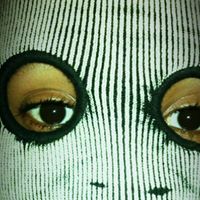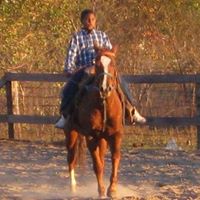Lloyd H Garner
age ~97
from Downey, CA
- Also known as:
-
- Lloyd N Garner
- Llyod H Garner
- Lloydh Darner
Lloyd Garner Phones & Addresses
- Downey, CA
- Long Beach, CA
- Orange, CA
- Bellflower, CA
- Yorba Linda, CA
- Lakewood, CA
- Denver, CO
- Alhambra, CA
- 749 S Laurinda Ln, Orange, CA 92869
Specialities
Insurance Litigation • Municipal Court • Personal Injury
Lawyers & Attorneys

Lloyd Garner - Lawyer
view sourceSpecialties:
Insurance Litigation
Municipal Court
Personal Injury
Municipal Court
Personal Injury
ISLN:
909786098
Admitted:
1991
University:
State University of New York at Albany, B.A., 1988
Law School:
New England School of Law, J.D., 1991
Us Patents
-
Extended Nozzle And Bit Stabilizer And Method Of Producing
view source -
US Patent:40687317, Jan 17, 1978
-
Filed:Nov 17, 1976
-
Appl. No.:5/742590
-
Inventors:Lloyd L. Garner - San Clemente CA
Charles Richard Harris - Whittier CA -
Assignee:Smith International, Inc. - Newport Beach CA
-
International Classification:E21B 910
-
US Classification:175339
-
Abstract:A rotary drill bit with downwardly extended circulation nozzle means an outwardly facing portion of which serves as a bit stabilizer wherein the upper portion of the nozzle means is on a greater diameter than the lower portion thereof so that the lower portion is inset from the wall of the formation, the upper portion of the nozzle means being machined from a given larger diameter to a diameter approximately but preferably slightly less than that of the bit body, and providing in the machine surface hardened inserts such as tungsten carbide.
-
Bearing Structure For A Rotary Rock Bit
view source -
US Patent:42602033, Apr 7, 1981
-
Filed:Sep 10, 1979
-
Appl. No.:6/073751
-
Inventors:Lloyd L. Garner - Dana Point CA
-
Assignee:Smith International, Inc. - Newport Beach CA
-
International Classification:F16C 3312
-
US Classification:308 82
-
Abstract:A rotary rock bit is disclosed having bearing surfaces utilized therein which have extremely long wear resistant properties. The rock bit comprises a plurality of legs extending downwardly from a main bit body. A cone cutter is rotatively mounted on a journal formed on each leg. One or more of the interengaging bearing surfaces between the cone and the journal includes a layer of diamond material mounted on a substrate of carbide. In one embodiment, the bearing material forms the thrust button adjacent the spindle located at the end of the journal. In another embodiment, the bearing material is located on the interengaging axial faces of the journal and cone. In still another embodiment, the bearing material is a segmented cylindrical bearing located in a circumferential groove formed in the journal.
-
Method Of Fabrication Of Rock Bit Inserts Of Tungsten Carbide (Wc) And Cobalt (Co) With Cutting Surface Wear Pad Of Relative Hardness And Body Portion Of Relative Toughness Sintered As An Integral Composite
view source -
US Patent:43593356, Nov 16, 1982
-
Filed:Jun 5, 1980
-
Appl. No.:6/156717
-
Inventors:Lloyd L. Garner - Dana Point CA
-
Assignee:Smith International, Inc. - Newport Beach CA
-
International Classification:B22F 700
C04B 3556
E21B 936
E21C 3518 -
US Classification:75208R
-
Abstract:A method of fabricating a rock bit insert which has improved wear characteristics is disclosed. Selected surfaces of the insert are implanted with a harder grade of tungsten carbide and sintered thereto. The special insert then would find application in the gage row of, for example, a roller cone rock bit.
-
Hybrid Rock Bit
view source -
US Patent:43433715, Aug 10, 1982
-
Filed:Apr 28, 1980
-
Appl. No.:6/144515
-
Inventors:William Baker - Irvine CA
Lloyd L. Garner - Dana Point CA
Charles R. Harris - Whittier CA -
Assignee:Smith International, Inc. - Newport Beach CA
-
International Classification:E21B 1014
-
US Classification:175329
-
Abstract:A hybrid rock bit is disclosed wherein a pair of opposing extended nozzle drag bit legs are positioned adjacent a pair of opposed tungsten carbide roller cones. The extended nozzle face nearest the hole bottom has a multiplicity of diamond inserts mounted therein. The diamond inserts are strategically positioned to remove the ridges between the kerf rows in the hole bottom formed by the inserts in the roller cones.
-
Soft Formation Drill Bit
view source -
US Patent:40674061, Jan 10, 1978
-
Filed:Jul 29, 1976
-
Appl. No.:5/709797
-
Inventors:Lloyd L. Garner - San Clemente CA
Charles Richard Harris - Whittier CA -
Assignee:Smith International, Inc. - Newport Beach CA
-
International Classification:E21B 910
-
US Classification:175341
-
Abstract:A rock bit with rotary cone cutter means having hardened insert teeth utilizing fewer than the normal number of teeth or of cutters used for a given gage hole wherein the cone cutter body is of greater diameter and for approximately the same axial length, of a greater wall thickness and to accommodate a greater insert tooth depth or grip length and permit a proportional increase in extension of the insert from the cutter body to provide greater penetration with fewer insert teeth in contact at a given time, and also providing for increased journal bearing area to increase the life of the extended insert cutters.
-
Drilling Bit Bearing Structure
view source -
US Patent:40373002, Jul 26, 1977
-
Filed:Apr 5, 1976
-
Appl. No.:5/673391
-
Inventors:Lloyd L. Garner - Los Alamitos CA
-
Assignee:Smith International, Inc. - Irvine CA
-
International Classification:B21D 5310
-
US Classification:291484R
-
Abstract:A rock drilling bit has a plurality of rolling cutters for pulverizing rock. The loads on the bearings between these cutters and their mounting pins are extreme and are carried by a friction bearing. The bearing surface in the cutter has a plurality of spaced apart pockets filled with a material harder than the carburized hardened steel of the balance of the bearing surface and having essentially zero ductility. Such a bearing surface is made by machining a plurality of shallow pockets in the cylindrical bearing surface either before or after carburizing. If formed before carburizing, the pockets are painted off to prevent carburizing in that area. Each of the pockets is then filled with the wear resistant hard material as a weld deposit. Finally, the steel body is hardened and the exposed steel portions of the bearing surface and wear resistant material are ground to form a finished bearing surface. Bearing life is increased substantially as compared with the best known prior bearing.
-
Rock Drill Bit Inserts With Hollow Bases
view source -
US Patent:41507282, Apr 24, 1979
-
Filed:Oct 28, 1977
-
Appl. No.:5/846570
-
Inventors:Lloyd L. Garner - San Clemente CA
George R. Herrick - Irvine CA
Charles R. Harris - Whittier CA -
Assignee:Smith International, Inc. - Newport Beach CA
-
International Classification:E21B 908
-
US Classification:175374
-
Abstract:A rock bit for drilling hard formations has a bit body with a plurality of rolling cone cutters mounted on it for rotation with rotation of the bit body. The cutters each have a plurality of recesses in their outer surfaces and a tungsten carbide insert is interference fitted into each of said recesses. A large diameter rock bit has such inserts larger than about 3/4 inch diameter and a cavity is provided in the cylindrical base of such an insert. The cavity has a volume in the range of from about 15 to 30% of the volume of the cylindrical base and extends into the cylindrical base a distance of at least about 40% of the diameter of the base. The depth of the recess is more than half of the length of the portion of the insert that grips the recess in which it is inserted. Large savings in expensive tungsten carbide can be made without decreasing performance of the tungsten carbide inserts.
-
Drilling Bit Bearing Structure
view source -
US Patent:40210847, May 3, 1977
-
Filed:Feb 4, 1975
-
Appl. No.:5/546936
-
Inventors:Lloyd L. Garner - Los Alamitos CA
-
International Classification:F16C 1900
-
US Classification:308 82
-
Abstract:A rock drilling bit has a plurality of rolling cutters for pulverizing rock. The loads on the bearings between these cutters and their mounting pins are extreme and are carried by a friction bearing. The bearing surface in the cutter has a plurality of spaced apart pockets filled with a material harder that the carburized hardened steel of the balance of the bearing surface and having essentially zero ductility. Such a bearing surface is made by machining a plurality of shallow pockets in the cylindrical bearing surface either before or after carburizing. If formed before carburizing, the pockets are painted off to prevent carburizing in that area. Each of the pockets is then filled with the wear resistant hard material as a weld deposit. Finally, the steel body is hardened and the exposed steel portions of the bearing surface and wear resistant material are ground to form a finished bearing surface. Bearing life is increased substantially as compared with the best known prior bearing.
Resumes

Lloyd Garner
view source
Lloyd Garner
view source
Lloyd Garner
view source
Lloyd Garner
view source
Lloyd Garner
view sourceFlickr

Lloyd Garner
view source
Garner Lloyd
view source
Lloyd Garner
view source
Lloyd Garner
view source
Lloyd Alexis Garner
view source
Lloyd Garner
view source
Lloyd Garner
view source
Mark Lloyd Garner
view sourceClassmates

Lloyd Garner
view sourceSchools:
Thurgood Marshall Academy 318 New York NY 1997-2001

Thorold High School, Thor...
view sourceGraduates:
Lloyd Garner (1968-1972),
Gilbert Woods (1973-1977),
Kathy Furney (1977-1981),
George Risbrook (1995-1999),
Courtney Gregoire (2002-2006)
Gilbert Woods (1973-1977),
Kathy Furney (1977-1981),
George Risbrook (1995-1999),
Courtney Gregoire (2002-2006)

Marianna Reformatory for ...
view sourceGraduates:
Lloyd Garner (1959-1960),
Lloyd Garner (1956-1960),
Stephen Finuff (2002-2006),
George Fudge (1956-1960),
Scott Frazier (1968-1972),
Dwight Grimes (1956-1960)
Lloyd Garner (1956-1960),
Stephen Finuff (2002-2006),
George Fudge (1956-1960),
Scott Frazier (1968-1972),
Dwight Grimes (1956-1960)

Florida State School for ...
view sourceGraduates:
spanky power (1982-1986),
larry power (1982-1986),
Lloyd Garner (1956-1960),
Vernon Andrews (1957-1958)
larry power (1982-1986),
Lloyd Garner (1956-1960),
Vernon Andrews (1957-1958)

Thurgood Marshall Academy...
view sourceGraduates:
Lloyd Garner (1997-2001),
Michael Burgan (2003-2007),
Malika Lee (2002-2006),
Aisha Pyatt (1994-1996),
Cynthia Smith (1997-2001),
Leandro Davis (1996-2000)
Michael Burgan (2003-2007),
Malika Lee (2002-2006),
Aisha Pyatt (1994-1996),
Cynthia Smith (1997-2001),
Leandro Davis (1996-2000)

Orlando College, Orlando,...
view sourceGraduates:
Lloyd Garner (1990-1992),
Ginean Cole (1990-1992),
Theresa Schwarz (1987-1993),
Fred Roberts (1980-1984)
Ginean Cole (1990-1992),
Theresa Schwarz (1987-1993),
Fred Roberts (1980-1984)
Youtube
Googleplus

Lloyd Garner
Myspace
Get Report for Lloyd H Garner from Downey, CA, age ~97













